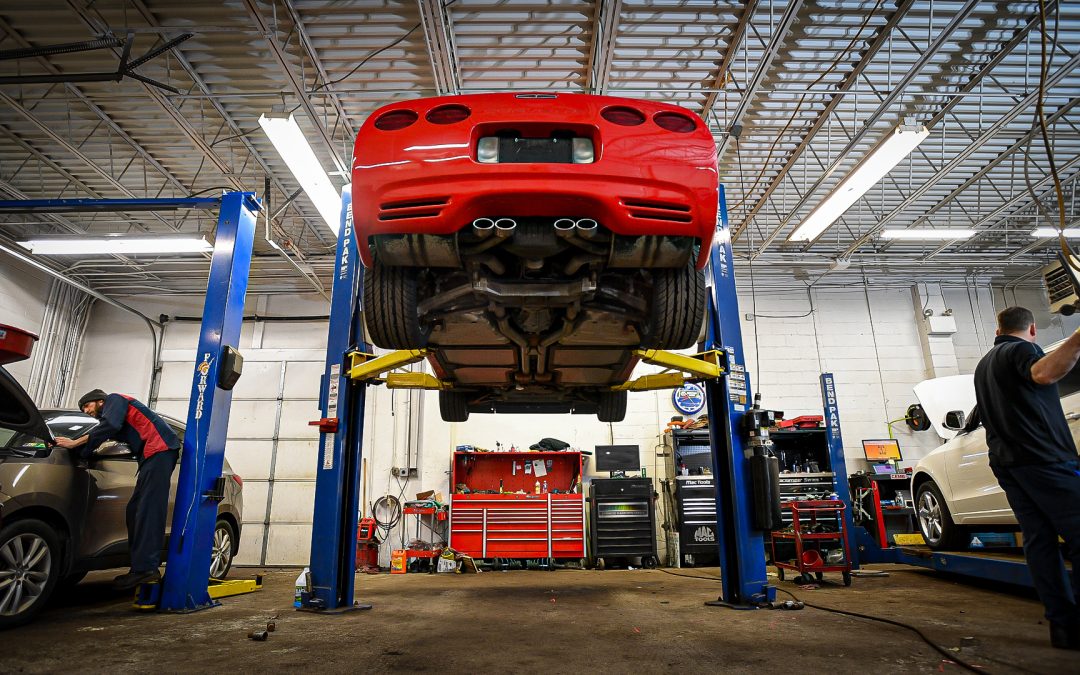A primer on spotting unprofitable jobs before they make it to a bay.

You’re probably already familiar with a growing movement to shorten the typical work week to just four days. Business journals, TV news, and social media outlets have covered the subject exhaustively in the last year or so, often in the same breath as “COVID-19” and “return to office.”
But what if you work in an auto repair shop, not an office? And you spent the so-called “COVID time-out” not sitting in on Zoom meetings but actually at work because, you know, your job servicing vehicles was deemed essential? Is there any reason for you to expect a future filled with 3-day weekends?
Maybe. But it probably depends a lot on who you work for, under what conditions, and exactly how many hours make up each of those four days.
It seems like almost as soon as the 5-day, 40-hour work week was signed into law, someone started asking if maybe a 4-day work week wouldn’t be an even better idea. Actually, several decades passed in between, but one study examined the merits as far back as 1977. After all, the idea of spending 20% less time sucking uncatalyzed exhaust while commuting and having three full days to disco every weekend must have sounded like a pretty sweet future back then.
Countless companies shifted millions of employees to work-from-home schedules to ride out the Covid pandemic. By the time employees eventually started returning to their pre-pandemic routines, the traditional 5-day work week had started to look pretty outdated to a lot of managers. From their perspective, a 4-day plan might offer the benefits of a better work/life balance, a consistently proven increase in worker productivity, and (at least if the whole company switches to the same 4-day schedule) significant reductions in operating costs for things like utilities. So it sounded like a win/win plan.
But how would it work for an automotive repair business? After all, many of the studies so far had focused on workers in larger teams and/or organizations where employees work on individual tasks (office workers) or were part of interdependent, tightly scheduled activities (production workers). Vehicle repair, on the other hand, is often dictated by the irregular twitches of the general public, making day-to-day workflow unpredictable at best.

Pipe dream or an efficient way to run a shop? Image by Josh Seasholtz.
There can be some real obstacles that prevent some repair shops from simply lopping off a day from their technicians’ schedules. Smaller shops, for instance, might not have enough staff to fully span the opening hours. Imagine two techs each working 4-day rotations in a 5-day-a- week operation; there would always be two days where each one is off entirely. We all know some jobs require helping hands, and a lean staff would limit the type of work a single tech could perform.
And what about your counter staff and office people? Do they also get a 4-day schedule, or do they get stuck working all 5 days? What happens on holidays? An imbalanced staff can cause all kinds of administrative problems, and it seems if the whole operation can’t take advantage of a revised schedule, you might be opening the doors to all kinds of conflict.
The bigger factor might likely be switching from five 8-hour days (5×8) to four ten-hour days (4×10). While office workers have generally been able to switch easily to a 4×10 schedule—and in some cases can get away with a 4×8 arrangement by “compressing” their work (otherwise known as working harder)—the nature of performing hourly labor means both shop owners and technicians will still want to book at least 40 hours of labor a week regardless of how it’s distributed.
The problem with a 10-hour day becomes productivity after several hours on the clock performing demanding physical labor. This is compounded in places where the combination of extreme heat and non-climate-controlled workshops accelerates late-day fatigue and dehydration. While air conditioning may be more common in newer buildings, a lot of older buildings still lack that luxury that we now mostly take for granted outside of work. Simply stated, a 10-hour workday in 90-plus degree heat with high humidity is neither a good use of the technician’s time nor the customer’s money.
Shops with adequate staff for bell-to-bell coverage every day the shop is open will be better positioned to shift workers to four days a week. Moving the entire department—including service managers, service advisors, and parts personnel—to the same schedule will also minimize staffing gaps required to keep vehicles moving through the shop. Climate-controlled workspaces are almost a must for extended daily shifts. In other words, large, more profitable operations (i.e., big dealerships) are probably best suited to make the switch.
But how does it work in the real world? Well, while most companies are still flirting with the idea, I actually walked into a business that consisted of two shops running on asynchronous schedules. One location ran on a typical 5×8 Monday-Friday schedule, while the other location operated entirely from Monday through Thursday on a 4×10 plan. The 4×10 deal was instituted on the whim of a former shop manager who liked long fishing weekends, or so I’m told.
About six months into managing this business, I had the unfortunate task of announcing that, as part of the larger integration of the enterprise, both shops would align on the 5×8 schedule based on the following reasoning. First, we needed both shops to be open five days a week for customer convenience. As a restoration shop, customer visits were especially critical to the customer experience, and we needed to know that whoever who was working on a given project would be available to meet with a customer during business hours, regardless of the day of the week. Second, this particular shop was situated a 100-year-old, two-story industrial building with no air conditioning. By noon in the summer it was hotter inside the building than outside, and afternoon productivity was virtually non-existent. Finally, the decision also helped eliminate standing conflicts over holiday pay and paid time off between the two different teams.
Predictably, there was lots of grumbling at that announcement, accompanied by body language that read like a scolded toddler. I was told by my predecessors to expect at least half of my eight technicians to walk. Believe me, the thought of losing anyone in a tough labor market had me sweating like it was an August afternoon in our upstairs paint booth.
When the day of reckoning arrived shortly thereafter, no one resigned. A month on, one of my guys told me that he had originally taken this position based on the 4-day arrangement and he couldn’t justify his long commute five days a week. He gave it a go and it didn’t work for him. In the end, I lost just one of my eight guys to the decision.
However, while I retained most of my staff in the conversion, it wasn’t always easy. Most of that team shared that they felt something had been taken from them by being forced to return to working Fridays. A couple guys had steady side jobs on those Fridays, and it cost them real money by agreeing to stay. Some of them started packing in extra hours early in the week and effectively taking off early on Friday afternoons once they’d hit their 40 hours, partially defeating the intended purpose of the change.
If there’s one lesson you should take away from my experience, it’s this: fully consider all the advantages and disadvantages before switching to a 4-day week. It should be a commitment, not an experiment, because it’s much harder to take it away than to never give it at all.
The articles and other content contained on this site may contain links to third party websites. By clicking them, you consent to Dorman’s Website Use Agreement.
Participation in this forum is subject to Dorman’s Website Terms & Conditions. Please read our Comment Policy before commenting.